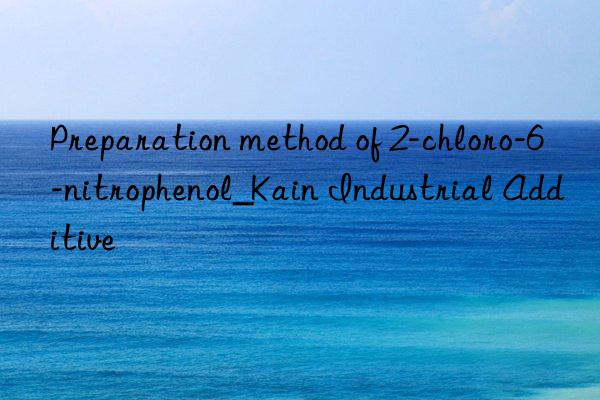
Background and overview[1]
2-Chloro-6-nitrophenol can be used as an intermediate for pharmaceutical and chemical synthesis. If 2-chloro-6-nitrophenol is inhaled, move the patient to fresh air; if there is skin contact, take off contaminated clothing, rinse the skin thoroughly with soap and water, and seek medical attention if you feel unwell; if the eye contact If exposed to sunlight, separate eyelids, rinse with running water or saline, and seek medical attention immediately; if ingested, rinse mouth immediately, do not induce vomiting, and seek medical attention immediately.
Preparation[1]
The preparation of 2-chloro-6-nitrophenol is divided into the following steps:
Step 1: Add 1.2mmol o-chlorophenol, 2.5mmol tripotassium phosphate, 0.5mmol 2-picolinic acid, 1mmol 2-bromopyridine, 0.012mmol copper iodide, and 7ml DMSO into a 50ml three-necked bottle. The mixture was refluxed at 90°C for 20 hours under nitrogen protection. After TLC detection, the reaction was completed. The resulting mixed solution was extracted with ethyl acetate, dried over anhydrous sodium sulfate, and then the solvent was removed under reduced pressure to obtain 2-(2-chlorophenoxy). Pyridine (93% yield).
Step 2: Add 0.5mmol of 2-(2-chlorophenoxy)pyridine, 0.05mmol of palladium acetate, 1.5mmol of tert-butyl nitrite, and 5ml of 1,2-dichloroethane to a sealing pressure of 25ml. in the container. The mixture was heated in a 90°C oil bath for 18 hours. After the reaction is detected by TLC, the reaction solution is diluted and filtered with dichloromethane to obtain a clear liquid, which is separated by column chromatography (eluent ratio: petroleum ether to ethyl acetate volume ratio 6:1) to obtain a light yellow liquid 2- (2-Chloro-6-nitrophenoxy)pyridine (56% yield).
Step 3: Dissolve 0.5mmol of 2-(2-chloro-6-nitrophenoxy)pyridine and 0.08ml of methyl triflate in 20ml of toluene, and place in a three-necked bottle under nitrogen protection for 100 React at ℃ for 2 hours. Remove the solvent, add 10 mmol of metallic sodium and 20 ml of methanol, and react at 80°C for 30 minutes under nitrogen protection. After the TLC detection reaction, extract with ethyl acetate, dry the extract over anhydrous sodium sulfate, remove the solvent under reduced pressure, and use column chromatography (eluent ratio: petroleum ether to ethyl acetate volume ratio 6:1 ) was isolated to obtain 2-chloro-6-nitrophenol (89% yield).
Main reference materials
[1] CN201410449413.8 A synthesis method of o-nitrophenols and their derivatives

 微信扫一扫打赏
微信扫一扫打赏

